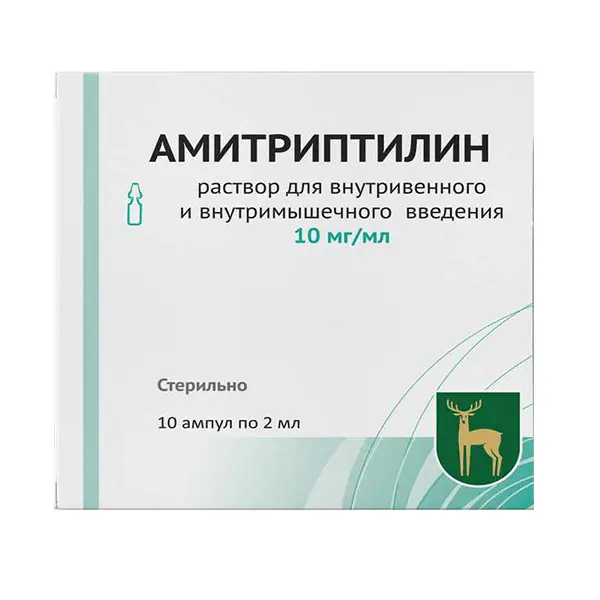Description
Amitriptyline Pharmacodynamics
Amitriptyline is a tricyclic antidepressant with a sedative effect.
Pharmacodynamics
Amitriptyline equally inhibits norepinephrine and serotonin reuptake in presynaptic nerve endings. The main metabolite of amitriptyline, nortriptyline, is relatively stronger inhibitor of norepinephrine reuptake than serotonin. It has cholinolytic and H1-histamine activity. It has powerful antidepressant, sedative and anxiolytic effects.
Indications
Endogenous depression and other depressive disorders.
Contraindications
Hypersensitivity, myocardial infarction (acute and subacute periods), arrhythmias, severe atrioventricular and intraventricular conduction disturbances (Gis pedicle block, II degree atrioventricular block), heart failure, acute alcohol intoxication, acute intoxication with hypnotics, psychoactive drugs, closed-angle glaucoma, urinary retention, including in prostatic hyperplasia, paralytic ileus, gateway stenosis, hypokalemia, concomitant use of QT interval prolongers or hypokalemia-inducing drugs, lactation, children under 18 years old.
Concomitant use with monoamine oxidase inhibitors (MAOIs) and their use within 14 days before and after treatment is contraindicated.
If you have one of the above mentioned diseases, be sure to consult your doctor before taking the drug.
With caution
Convulsive disorders, chronic alcoholism, prostatic hyperplasia, severe liver and cardiovascular diseases, bronchial asthma, manic depressive psychosis (MDP) and epilepsy (see section “Special indications”), bone marrow inhibition, hyperthyroidism, thyrotoxicosis, urinary retention, bladder hypotension, angina pectoris, increased intraocular pressure, decreased gastrointestinal motor function (risk of paralytic ileus), schizophrenia (although usually there is no exacerbation of productive symptoms when taken), old age, pregnancy, breastfeeding period.
If you have one of the above diseases, be sure to consult your doctor before taking the drug.
Use during pregnancy and breastfeeding Use during pregnancy is not recommended.
If the drug is used by pregnant women, it is necessary to warn about the high risk of such administration for the fetus, especially in the third trimester of pregnancy. The use of high doses of tricyclic antidepressants in the third trimester of pregnancy may lead to neurological disorders in the newborn. Cases of somnolence have been recorded in newborns whose mothers used nortriptyline (amitriptyline metabolite) during pregnancy, and cases of urinary retention have been noted.
Amitriptyline penetrates into breast milk. The ratio of breast milk/plasma concentrations is 0.4-1.5 in a breastfed baby.
Breastfeeding should be discontinued when amitriptyline is used.
If this is not done, the child’s condition should be monitored, especially during the first four weeks after birth.
The breastfed baby may have adverse reactions (see section “Adverse effects”).
Dosage and administration
- Administration intramuscularly and intravenously.
Doses of the drug are adjusted individually depending on the age and condition of the patient. - For treatment-resistant depression: intramuscularly and intravenously (slowly!), administer a dose of 10-20-30 mg up to 4 times daily, the dose should be increased gradually, to a maximum daily dose of 150 mg; 1-2 weeks later, the drug should be given orally.
- For elderly people, lower doses are administered and increased more slowly.
If condition of a patient does not improve within 3-4 weeks of treatment, further therapy is inadvisable. - Cancellation of
The drug should be withdrawn gradually to avoid development of “withdrawal” symptoms.
Symptoms of “withdrawal”: after long-term use with abrupt withdrawal such adverse reactions as nausea, vomiting, diarrhea, headache, malaise, insomnia, unusual dreams, unusual agitation, irritability may occur; after long-term use with gradual withdrawal – irritability, sleep disorders, unusual dreams. These symptoms do not indicate the development of addiction to the drug.





